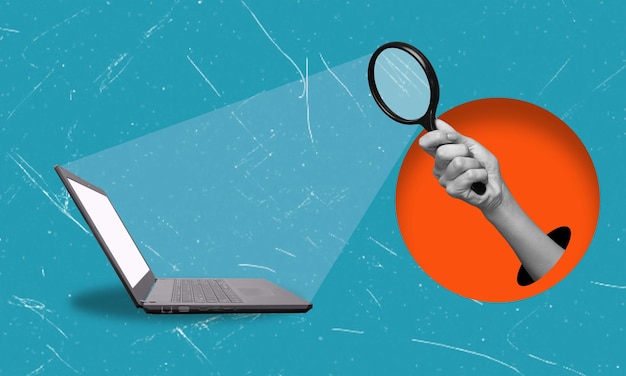Is This Real? Uncovering the Truth Behind Internet Sensations

Is This Real? Uncovering the Truth Behind explores the viral content and internet promotions that dominate our screens, sifting through the noise to reveal authenticity and separate fact from fiction, enabling informed engagement with online trends.
Navigating the internet can feel like wading through a sea of information, where distinguishing between what’s genuine and what’s fabricated becomes increasingly challenging; Is This Real? Uncovering the Truth Behind aims to give you the tools to be more discerning in the digital world.
The Allure of Viral Content
Internet sensations capture our attention, often spreading like wildfire through shares, likes, and comments. Understanding why certain content goes viral is crucial to deciphering its potential authenticity and impact.
These sensations tap into our emotions, desires, and curiosities, creating a sense of shared experience and community. However, the speed and reach of viral content can also make it difficult to verify its truthfulness.
Understanding the Virality Factor
Several key elements contribute to content’s virality. These include emotional appeal, novelty, social currency, and practical value. When content resonates with these factors, it’s more likely to be shared.
The Role of Social Media Algorithms
Social media platforms use algorithms to determine which content users see. These algorithms often prioritize content that generates high engagement, regardless of its accuracy. This can lead to the rapid spread of misinformation.
- Emotional Connection: Content that evokes strong emotions, such as joy, anger, or sadness, is more likely to be shared.
- Novelty and Uniqueness: People are drawn to content that is new, surprising, or challenges conventional thinking.
- Social Currency: Sharing content that makes people look good or feel smart enhances their social standing.
- Practical Value: Content that offers useful information or solves a problem is also highly shareable.
Identifying these factors can help to distinguish between content created to deceive and content that simply resonates with a wide audience. Critical evaluation remains essential in assessing authenticity.

Ultimately, the allure of viral content lies in its ability to connect us and provide value, but it demands a cautious approach to ensure we are not misled by false information.
Deepfakes and Fabricated Realities
Deepfakes are synthetic media in which a person in an existing image or video is replaced with someone else’s likeness. These technologies blur the lines between reality and fabrication, posing significant challenges to trust and verification.
Recognizing deepfakes requires an understanding of the technology and the telltale signs of manipulation. Often, these signs are subtle but detectable with careful scrutiny.
Spotting the Signs of Deepfake Videos
Deepfake videos often exhibit inconsistencies in facial expressions, unnatural blinking patterns, and poor audio synchronization. These anomalies can be clues that the video has been manipulated.
Audio Manipulation and Voice Cloning
Audio deepfakes can clone someone’s voice and create fabricated statements. Detecting these manipulations requires careful attention to voice tone, background noise, and contextual inconsistencies.
- Unnatural Blinking: Deepfake faces may blink at unnatural rates or exhibit other facial inconsistencies.
- Poor Audio Sync: The audio may not perfectly match the lip movements or facial expressions in the video.
- Lighting Discrepancies: Lighting and shadows may appear inconsistent across the video frame.
- Background Noise: Unusual background noises or distortions can indicate audio manipulation.
Staying informed about the evolving techniques of deepfake creation is crucial in protecting oneself from misinformation and manipulation. The technology is always advancing, so continuous education is key.
While detecting deepfakes can be challenging, staying informed and using available tools can significantly reduce the risk of being deceived.
The Spread of Misinformation
Misinformation spreads rapidly on the internet, often fueled by social media algorithms and a lack of fact-checking. Understanding how and why misinformation spreads is key to combating its influence.
Combating misinformation requires critical thinking, responsible sharing practices, and support for reliable sources of information. These actions can help slow the spread of false narratives.
The Role of Social Media in Spreading Falsehoods
Social media platforms can amplify misinformation by prioritizing sensational content over factual accuracy. This creates an environment where false narratives can quickly gain traction.
Psychological Factors Influencing Belief in False Information
People are more likely to believe misinformation that aligns with their existing beliefs and biases. Confirmation bias plays a significant role in the acceptance and spread of false information.
- Confirmation Bias: People tend to seek out and interpret information that confirms their existing beliefs.
- Emotional Reasoning: Emotions can override rational thinking, making people more susceptible to false information.
- Lack of Digital Literacy: Many people lack the skills to critically evaluate online information.
- Echo Chambers: Social media algorithms can create echo chambers where users are only exposed to information that confirms their beliefs.
By understanding these psychological factors and how they contribute to the spread of misinformation, individuals can take steps to mitigate their influence and promote responsible information consumption.
Ultimately, fighting the spread of misinformation demands a collective effort to promote critical thinking, cultivate digital literacy, and support reliable sources of news and information.
The Power of Context and Source Verification
Verifying the context and source of online information is crucial for determining its authenticity. Scrutinizing the source’s credibility and comparing the information with other reliable sources can help unveil the truth.
A lack of context can easily distort facts, leading to misunderstandings and misinterpretations. Always seek the full picture before forming an opinion.
Checking the Source’s Credibility
Investigate the source’s reputation, mission, and history. Look for signs of bias or an agenda that could compromise its objectivity.
Cross-Referencing Information with Reliable Sources
Compare the information with multiple trusted news outlets, reputable organizations, and academic publications. Consistency across sources enhances credibility.

- About Us Page: Review the source’s “About Us” page to understand its mission, values, and background.
- Author Credentials: Check the author’s credentials and expertise in the relevant field.
- Fact-Checking Policies: Look for evidence of fact-checking processes and editorial oversight.
- Contact Information: Verify that the source provides clear contact information and is transparent about its operations.
By meticulously checking sources and contextualizing information, individuals can better protect themselves from misinformation and make more informed decisions.
Ensuring the integrity of information begins with diligent verification and a commitment to seeking the truth.
Tools and Resources for Fact-Checking
Numerous tools and resources are available to aid in fact-checking and verifying online information. These tools can help identify manipulated images, false claims, and unreliable sources.
Utilizing these tools can significantly enhance one’s ability to navigate the digital landscape with confidence and discernment.
Image Verification Tools
Reverse image search tools like Google Images and TinEye can help determine if an image has been manipulated or used out of context. These tools search for identical or similar images online, revealing their origins and previous uses.
Fact-Checking Websites and Organizations
Websites like Snopes, PolitiFact, and FactCheck.org provide in-depth analyses of claims and verify their accuracy. These organizations employ professional fact-checkers who investigate and debunk false narratives.
- Google Images: Perform a reverse image search to find the origins of an image.
- Snopes: Check if a claim or story has been debunked by professional fact-checkers.
- PolitiFact: Assess the accuracy of statements made by politicians and public figures.
- FactCheck.org: Investigate the factual accuracy of claims made in political debates and campaigns.
By leveraging these tools and resources, individuals can take proactive steps to verify the information they encounter and protect themselves from deception.
The availability of fact-checking tools and resources empowers individuals to become more informed and responsible consumers of online information.
Cultivating Critical Thinking Skills
Developing critical thinking skills is essential for navigating the complex and often deceptive digital world. These skills enable individuals to evaluate information objectively, identify biases, and make informed decisions.
Cultivating critical thinking requires a commitment to intellectual curiosity, open-mindedness, and continuous learning.
Questioning Assumptions and Biases
Examine your own assumptions and biases to avoid being swayed by information that confirms your existing beliefs. Be open to considering alternative perspectives and evidence.
Evaluating Evidence Objectively
Assess the evidence presented to support a claim. Look for credible sources, verifiable data, and logical reasoning. Be wary of anecdotal evidence and emotional appeals.
- Intellectual Curiosity: Be curious and willing to explore different perspectives and ideas.
- Open-Mindedness: Be open to changing your mind based on new evidence and information.
- Skepticism: Be skeptical of claims that seem too good to be true or lack supporting evidence.
- Analytical Skills: Develop your ability to analyze information, identify biases, and evaluate evidence objectively.
By cultivating these critical thinking skills, individuals can become more discerning consumers of online information and make more informed decisions.
Critical thinking is the cornerstone of responsible digital citizenship, fostering an environment of informed discourse and reasoned judgment.
| Key Point | Brief Description |
|---|---|
| 🤔 Viral Content | Understand allure and elements driving its spread. |
| 🎭 Deepfakes | Identify anomalies in videos and audio to spot manipulations. |
| 🌐 Misinformation | Recognize social media’s role and psychological factors. |
| 🔍 Source Verification | Check source credibility and cross-reference info. |
Frequently Asked Questions
▼
Content goes viral due to emotional connection, novelty, social currency, and practical value. Content resonating with these triggers widespread sharing.
▼
Look for inconsistencies in facial expressions, unnatural blinking, and audio synchronization. Addressing these can signal the video has been manipulated.
▼
Confirmation bias is the tendency to favor information confirming existing beliefs. People seek info that aligns, hindering objective evaluation.
▼
Verifying sources is vital to confirming information authenticity. Scrutinizing the source and comparing with known, reputable outlets helps reveal truth.
▼
Improve critical thinking by questioning assumptions, being open-minded as evidence changes, and honing analytical skills to analyze content objectively.
Conclusion
In conclusion, becoming a discerning consumer of online information requires a combination of knowledge, skills, and tools. By understanding the allure of viral content, recognizing deepfakes, combating misinformation, verifying sources, and cultivating critical thinking, individuals can navigate the digital landscape with confidence and integrity.
